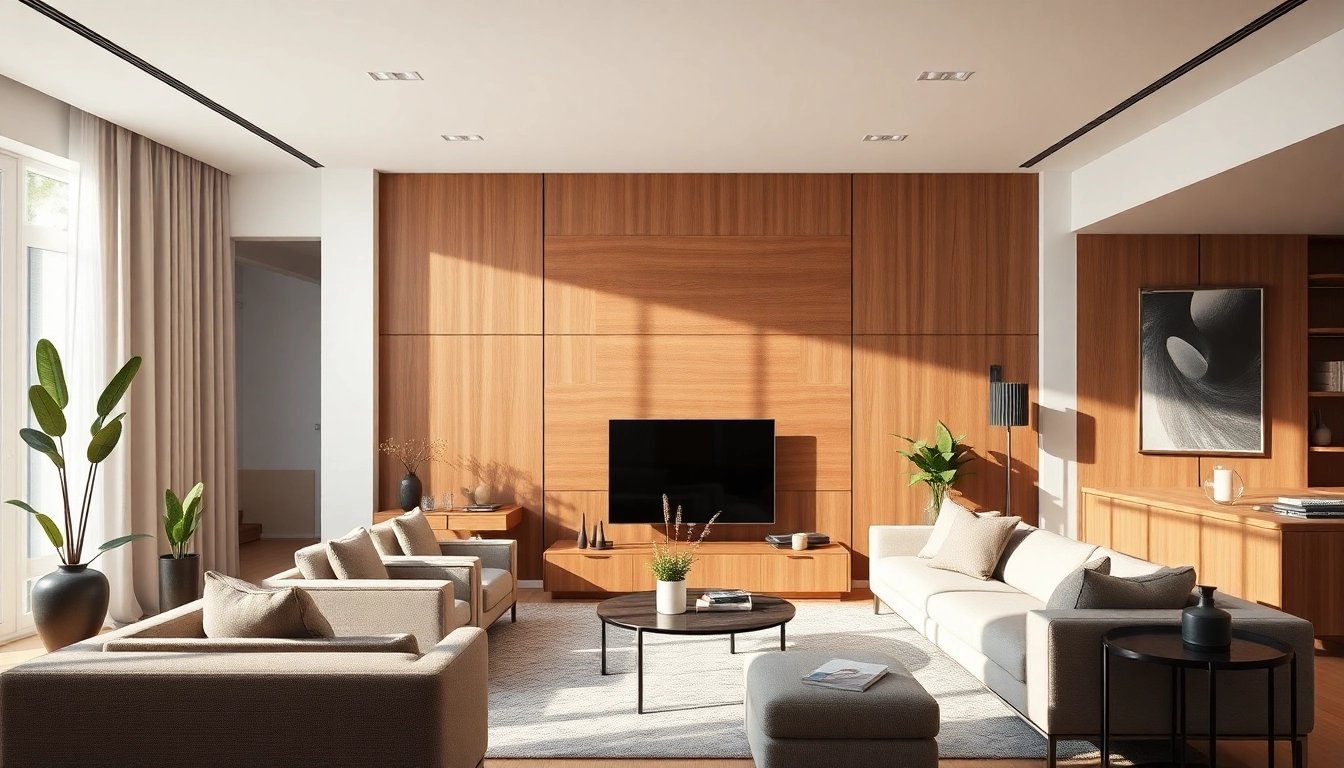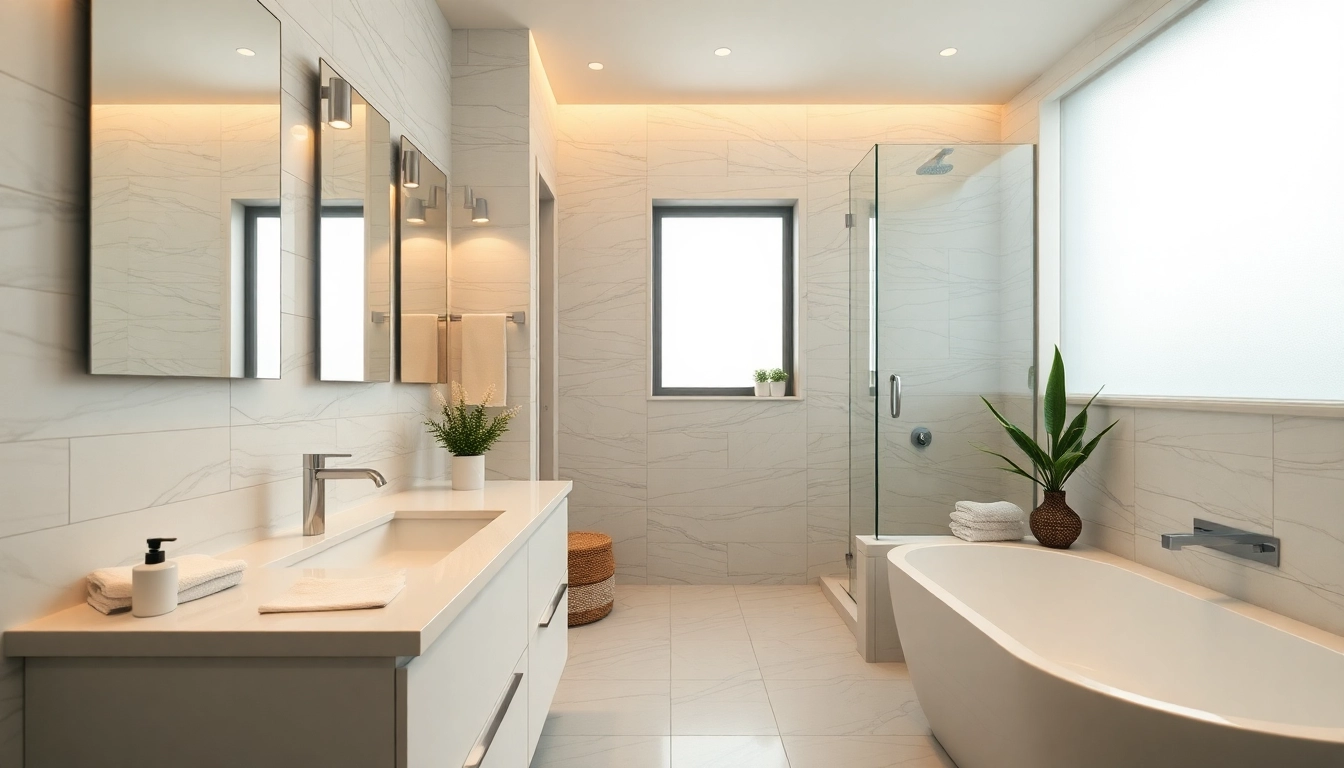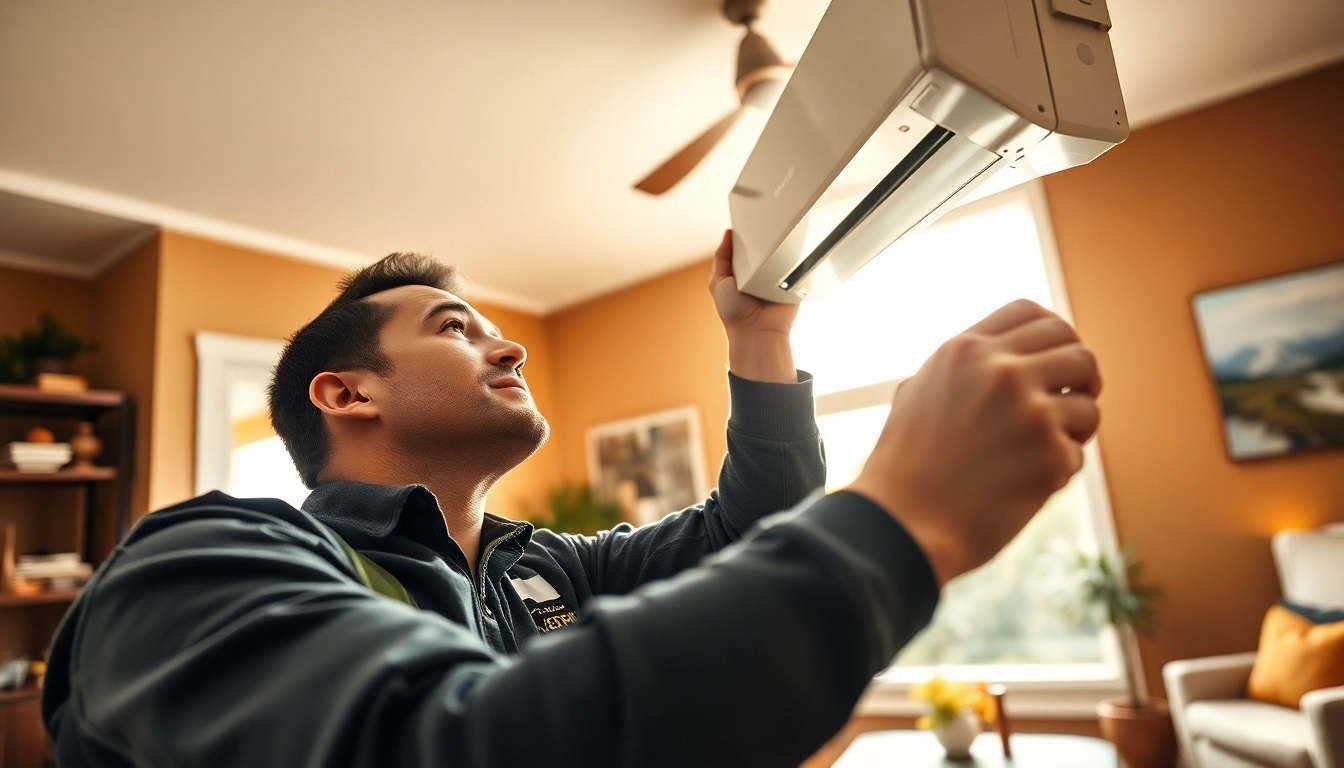
Understanding Interior Paneling
What Is Interior Paneling?
Interior paneling refers to a variety of materials used to enhance the appearance of walls and ceilings in a space. Traditionally made from wood, modern interior paneling can also include materials such as vinyl, composite, or even metal. The primary purpose of paneling is to improve the aesthetic appeal of a room while also providing insulation and soundproofing benefits. With various styles and finishes available, interior paneling can transform the overall ambiance of a space, making it more inviting and stylish.
Types of Interior Paneling Materials
There is a wide array of materials used for interior paneling, each with its own unique characteristics, advantages, and price points. Here are some common types:
- Wood Paneling: A classic choice that offers warmth and character. Available in different species such as pine, oak, and cedar, wood paneling can be stained or painted to match your decor.
- Vinyl Paneling: Known for its durability and moisture resistance, vinyl paneling is perfect for areas like kitchens and bathrooms. It’s also easy to clean and comes in a variety of styles.
- Composite Paneling: Made from engineered wood, composite paneling provides a cost-effective option with enhanced structural stability and moisture resistance.
- Metal Paneling: For a modern touch, metal paneling can add industrial flair to a space. It’s often used in commercial settings but can also make a bold statement in residential designs.
- Fabric Panels: Soft fabric-covered panels can enhance acoustics and add warmth to interiors. They are often used in home theaters or music studios.
Benefits of Using Interior Paneling
Choosing interior paneling for your spaces comes with numerous benefits. Here are some key advantages:
- Aesthetic Appeal: Interior paneling provides beauty and character, accommodating various design styles from traditional to contemporary.
- Insulation and Energy Efficiency: Paneling can provide extra insulation, ultimately reducing heating and cooling costs.
- Sound Absorption: Certain materials, like fabric and wood, can help absorb sound, making spaces quieter and more comfortable.
- Easy Installation: Many forms of paneling can be installed quickly and with relative ease, speeding up the renovation process.
- Moisture Resistance: Materials like vinyl are resistant to water, making them ideal for high-moisture areas.
Choosing the Right Interior Paneling
Factors to Consider When Selecting Paneling
When selecting the appropriate interior paneling for your space, there are several factors to consider:
- Room Function: Assess the primary function of the room. Spaces requiring higher durability, like kitchens or hallways, may benefit from more robust options like vinyl or composite.
- Aesthetic Preferences: Consider your overall design theme. Traditional homes may suit wood paneling, while modern designs might lean towards metal or sleek composite materials.
- Budget: Paneling comes in a wide range of prices. Set a budget to narrow your options effectively without compromising quality.
- Installation Methods: Some paneling types require specialized tools or professional installation, while others can be DIY-friendly. Choose based on your skill level and resources.
- Sustainability: If eco-friendliness is a priority, select materials that are sustainably sourced or made from recycled components.
Matching Interior Paneling with Your Home Decor
Incorporating interior paneling into your home decor requires careful consideration of color, texture, and style. Here are some strategies to effectively match paneling with your existing decor:
- Color Coordination: Choose colors that complement existing furnishings. Lighter shades can enhance natural light, while darker shades can create warmth and intimacy.
- Texture Contrast: Mixing different textures can add depth. Pair smooth paneling with rough textures such as stone or brick for a balanced look.
- Style Compatibility: Ensure that the paneling style aligns with your home architecture. Modern paneling might clash with a traditional home if not carefully executed.
- Accent Walls: Consider executing only a portion of the wall for an accent effect, allowing paneling to serve as a focal point rather than overwhelming the space.
Durability and Maintenance of Different Paneling Types
Understanding the durability and maintenance needs of the various paneling types will help in making informed decisions. Here’s a breakdown:
- Wood Paneling: Requires periodic sealing and refinishing to maintain appearance. It’s important to monitor for signs of moisture damage or termites.
- Vinyl Paneling: Highly durable with minimal maintenance. Regular cleaning with mild soap and water is typically sufficient.
- Composite Paneling: Generally low-maintenance, but it’s wise to clean any spills to prevent staining.
- Metal Paneling: Resists wear and tear but may require occasional polishing or touch-ups to maintain a pristine look.
- Fabric Panels: May need professional cleaning to preserve their appearance and effectiveness in sound absorption.
Installation Techniques for Interior Paneling
Tools and Materials Needed for Installation
Before beginning your paneling project, it’s crucial to gather all necessary tools and materials. Here’s a general list:
- Measuring Tape: For accurate measurements of the wall.
- Level: Ensuring that panels are installed straight.
- Stud Finder: To locate the wall studs for secure fastening.
- Power Drill: For installing screws or anchors.
- Saw: To cut panels to size, if necessary.
- Adhesive and Fasteners: Depending on the installation method, these might vary.
- Safety Gear: Such as goggles and gloves to ensure safety during work.
Step-by-Step Guide to Installing Interior Paneling
Installing interior paneling can be a rewarding DIY project. Follow these steps for a successful installation:
- Preparation: Clear the space, removing furniture and baseboards if necessary. Clean and prep the walls to ensure smooth adhesion.
- Measure and Mark: Use a measuring tape and level to mark where the panels will be installed, ensuring equal spacing.
- Cut Panels: If needed, cut the panels to size using a saw, being careful to measure precisely.
- Install Panels: Begin installing from the bottom up, applying adhesive and using fasteners to secure the panels to the wall.
- Finishing Touches: Seal any gaps with caulk, and reattach baseboards or decorative trims as desired. Paint or stain wood panels if necessary.
Common Mistakes to Avoid During Installation
To ensure a smooth installation process, be mindful of these common mistakes:
- Ignoring Wall Condition: Failing to inspect and prepare the underlying wall can lead to adhesion issues.
- Poor Measurements: Double-check all measurements to avoid cutting panels incorrectly, which can waste time and materials.
- Inconsistent Spacing: Ensure uniform spacing between panels to maintain a clean appearance.
- Skipping Safety Precautions: Always wear appropriate safety gear to prevent accidents.
Interior Paneling Design Trends
Current Trends in Paneling Design
Interior paneling is continually evolving with design trends. Here are some of the most popular contemporary styles:
- Vertical Panels: Ascending panels create an impression of height and can make a space feel larger.
- Textured Paneling: Incorporating varied textures in paneling adds visual intrigue to walls, enhancing depth and character.
- Bold Colors: Deep, rich colors are becoming favored, allowing homeowners to infuse personality into their environments.
- Eco-Friendly Options: Sustainable materials are gaining traction as more individuals prioritize environmental impact in their home designs.
Incorporating Color and Texture with Paneling
To make the most of your interior paneling, think about how color and texture can create synergy within your home:
- Contrast: Mixing light and dark colors can establish a layered look that is both interesting and sophisticated.
- Matching Fabrics: Coordinating fabric upholstery with wall panel color and texture can provide a cohesive design.
- Accent Features: Use bright or textured panels as focal points, disrupting monotony and guiding the visual flow of the room.
Combining Interior Paneling with Other Design Elements
When integrating interior paneling with other design aspects, consider these strategies for maximum impact:
- Lighting: Use strategic lighting to highlight panel textures and colors, casting beautiful shadows that enhance the paneling’s features.
- Furniture Placement: Arrange furniture so it complements the paneling, allowing both elements to shine.
- Complementary Materials: Combine paneling with tiles, stone, or glass to enrich the overall design and add depth.
Maximizing the Impact of Your Interior Paneling
Using Lighting to Accentuate Paneling Features
Lighting can dramatically change how interior paneling is perceived. Here are some creative lighting techniques:
- Wall Washers: Install wall washers to cast light evenly across the panel surface, emphasizing textures and finishes.
- Spotlights: Use spotlights to draw attention to specific areas of paneling, creating drama and focal points in the room.
- Ambient Lighting: Soft ambient lighting can create an inviting atmosphere, making paneling appear warm and welcoming.
Creating Focal Points with Interior Paneling
Positioning paneling to create focal points in a room can guide attention and enhance design flow. Here are ways to do so:
- Accent Walls: Choose one wall to highlight with bold paneling, setting it apart from others through contrasting colors or textures.
- Integrated Shelving: Create built-in shelving units with paneling for added functionality that complements the wall design.
- Mixing Styles: Use contrasting paneling styles or colors to delineate spaces within open floor plans, guiding the eye naturally through the area.
Measuring the ROI of Interior Paneling Projects
Investing in interior paneling can yield significant returns both functionally and aesthetically. To measure your return on investment (ROI), consider these factors:
- Increased Home Value: Quality interior paneling can elevate property value, especially in desirable neighborhoods.
- Energy Savings: Enhanced insulation can lead to lower energy bills, providing tangible savings over time.
- Market Appeal: Well-executed paneling can attract potential buyers or tenants, improving marketability and decreasing time on the market.






